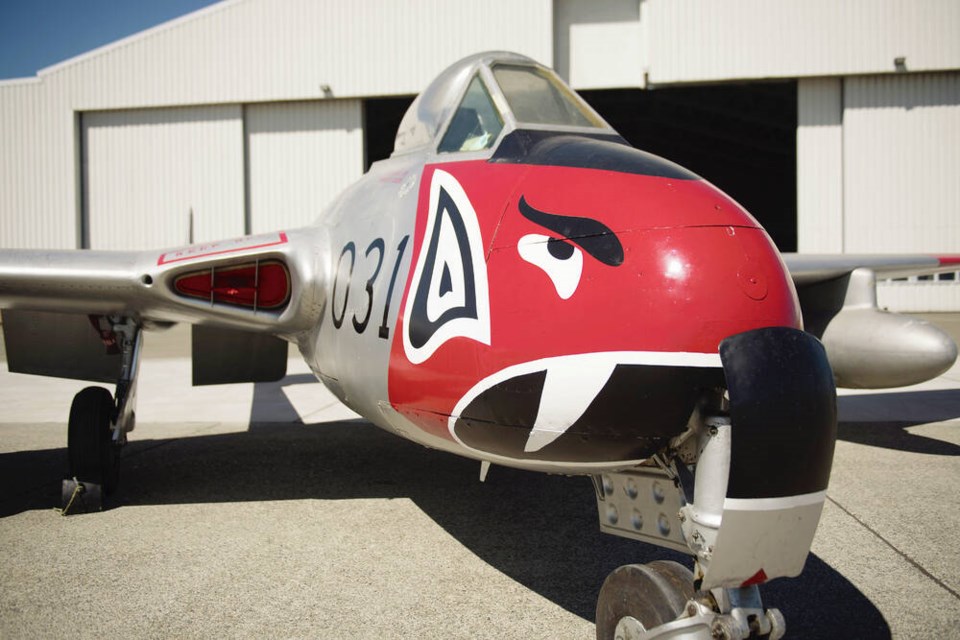The first fighter jet used by the Royal Canadian Air Force, long hidden from public view at CFB Comox because of its wood construction, could have a very public new home as early as next year.
The De Havilland Vampire Mark III — a futuristic aircraft for its time — was the first jet to operate from an aircraft carrier in 1945 and three years later set the world altitude record of 59,500 feet and became the first jet to cross the Atlantic.
The Royal Canadian Air Force used the Vampire for a decade before it was replaced by the F-86 Sabre in 1958.
CFB Comox 19 Wing acquired the Vampire in 2000 from American Bill Lamberton, where it was traded for a surplus Tutor aircraft.
The remarkable Vampire with tail number 17031 — flown at airshows for years — was declared an artifact in 2001, but hasn’t seem much daylight since. Because of its balsa and spruce construction, the jet has been under cover in hangars to preserve it.
Now an effort is underway to build a permanent display for the Vampire to mark the 100th anniversary of the Royal Canadian Air Force by April 1, 2024.
A fundraising campaign has started to build a glass pavilion that will surround the aircraft at Comox Air Force Museum Heritage Air Park. It is designed to be covered from the top with glass surrounding the jet to enable close inspection by visitors.
About $200,000 of the $1.5 million required has been raised — not including this week’s surprise matching offer.
Maj. Niomi Caldwell said Thursday CFB Comox is working with an anonymous donor who agreed to match dollar for dollar the next $100,000 in donations.
“This plane is an important piece of RCAF history that needs to be preserved,” said Caldwell.
“We have seen an amazing level of support from local residents and the community at large, and we have a great team working to ensure this project is successful.
“The glass enclosure featured in our pavilion is designed to keep visitors protected from the rain and sun, and allows them to get up close with a 360-degree view of the aircraft.”
The pavilion is part of a Heritage Air Park project that started last spring, including an upgrade to the fencing, a new entrance gate and refurbishing some of the aircraft on display.
The De Havilland Vampire’s prototype, nicknamed the Spidercrab, became the third British jet to fly on Sept. 20, 1940, according to CFB Comox.
In 1948, the RCAF had to choose between the Vampire and another jet, the Gloster Meteor, to equip the force’s squadrons. The Vampire was selected and 85 of the Mark III variety were ordered.
The Vampires from the first production run were primarily assigned to auxiliary squadrons for training purposes, including 442 City of Vancouver Auxiliary Fighter Squadron, stationed on Sea Island, and now the site of Vancouver International Airport.
The squadron often used the Vampires in local air shows, as well as at summer camps at air force bases around Western Canada.
The jets could reach a top speed of 540 miles per hour at 20,000 feet with a rate of climb of 4,700 feet per minute. It was armed with four 20mm cannons in the nose of the aircraft.
• How to donate to the Vampire pavilion: For more information on donations or to donate gifts in kind, contact Maj. Caldwell at 250-339-8211 ext. 8205. Email: [email protected]. All donations will be eligible to receive a tax receipt. For donations under $5,000, visit comoxairforcemuseum.ca.
>>> To comment on this article, write a letter to the editor: [email protected]



